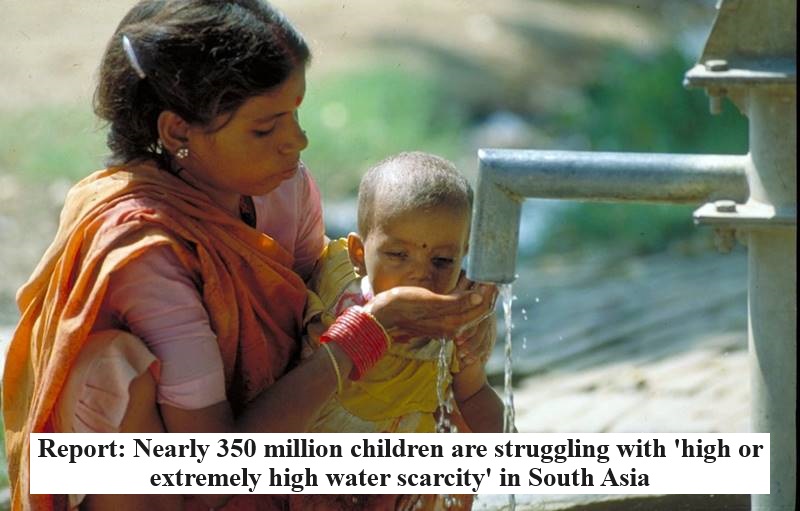
A new report by the United Nations Children’s Fund (UNICEF) reveals that nearly 350 million children in South Asia are grappling with “high or extremely high water scarcity,” marking the highest number among all global regions. The severity of water scarcity has intensified due to the adverse impacts of climate change.
The report emphasizes the detrimental effects of water scarcity on children’s well-being, growth, and overall health. It leads to food insecurity, malnutrition, and an increased risk of various diseases.
UNICEF’s report highlights the alarming statistic that 347 million children under 18 in South Asia face high or extremely high water scarcity, making up over one-quarter of the world’s children in the eight-nation region, which includes Afghanistan, Bangladesh, Bhutan, India, Nepal, Maldives, Pakistan, and Sri Lanka. However, South Asia only possesses four percent of global renewable water.
Climate change exacerbates the situation by disrupting weather patterns and rainfall, resulting in unpredictable water availability and worsening conditions from over-extraction of groundwater. Approximately 70 million children in South Asia live in drought-prone regions where aquifers face severe over-pumping.
The report identifies poor water quality, water scarcity, and mismanagement, such as excessive aquifer pumping, as key factors contributing to the water crisis in South Asia. The Indo-Gangetic Basin, encompassing countries like Pakistan, India, Bangladesh, and Nepal, is highlighted as the “most heavily exploited aquifer in the world.”
Sanjay Wijesekera, UNICEF Regional Director for South Asia, stresses the importance of safe water as a basic human right and expresses concern for the millions of children in the region facing challenges due to floods, droughts, and other extreme weather events, increasingly triggered by climate change.
Without significant progress, the report warns that South Asia will only reduce the number of children lacking basic drinking water from 45 million to 18 million. The region had the highest number of children, 169 million, under 18 years exposed to extreme water vulnerability globally in 2022, with last year recording 45 million children lacking access to basic drinking water services. Eastern and Southern Africa and West and Central Africa follow South Asia, with 130 million and 102 million children at risk from severe water scarcity, respectively.

Post Your Comments